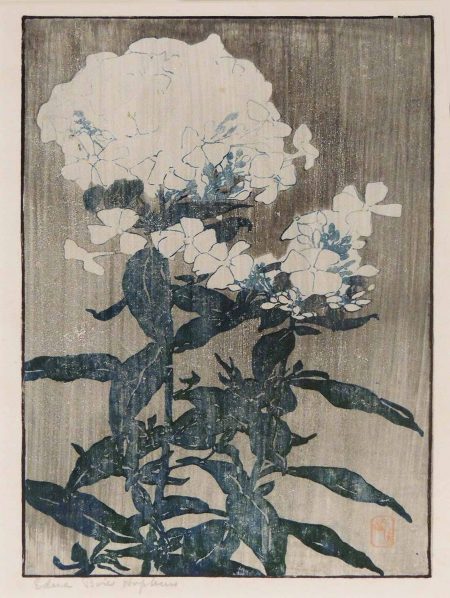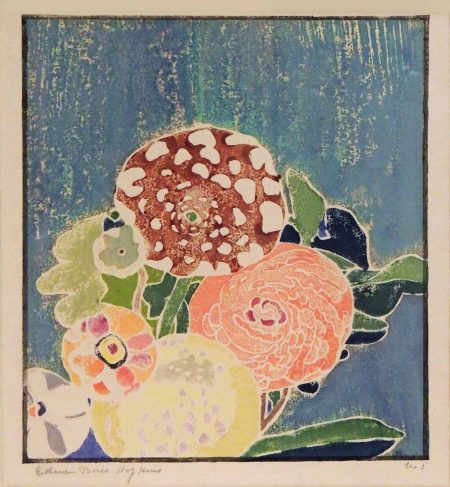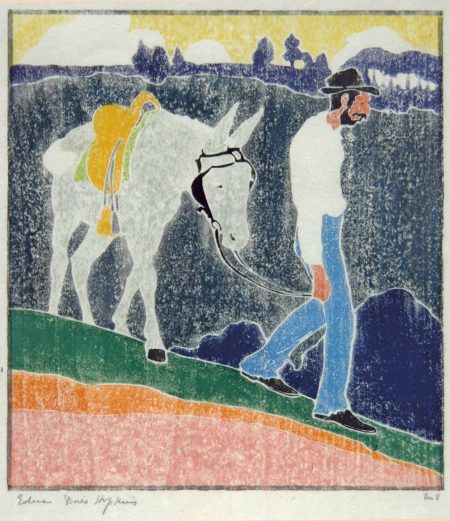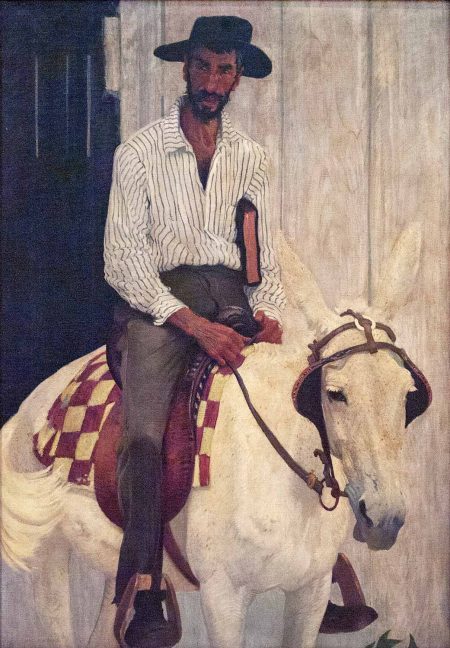The extensive works of James R. Hopkins and Edna Boies Hopkins are featured in their respective exhibitions in the Galleries of the Springfield Museum of Art. This is a unique opportunity to acquaint yourself with a husband and wife whose individual expressive works reverently reveal life in the American heartland.
“Faces of the Heartland” focuses on the painting oeuvre of James Hopkins who also fostered an illustrious teaching career. Most notable may be his appointment in 1923 as head of the Ohio State University’s Fine Art Department, where he remained until 1948. Under his direction, the department became a nationally recognized school of art.
Hopkins’s farmland childhood in Ohio laid the fertile foundation for the subject matter of his later artistic pursuits. Studying at art schools first in Columbus and then in Cincinnati, Hopkins moved to NYC upon graduation. Later in Paris, he searched out the most influential artists of the Paris scene before retiring to the States.
The exhibition features over 40 figurative and portraiture works by Hopkins, who populates the world with mountain men and their forbearing women, children and mules. A man’s best friend seems to be his rifle with worn stock, the cold barrels grasped with both hands. Chicken farmers present their best specimens for inspection.
One of my favorites is the preacher man. In dramatic limited color design, he is mounted on a snow white mule, bareback with only a red and white checkered quilt for covering. The holy book is best carried under the left arm, leaving both hands free for deft maneuvers of the reins on the beast, while the leather binding is moistened with the stresses of the day.
Hopkins depicts the values and ties that bind the Appalachian family. “Cumberland Woman with Baby” portrays a mother whose uplifted eyes punctuate her long suffering sober expression. The small bundled child is quietly nestled but not embraced in her arms. In “Fisherman and Boy”, the father and presumable son lumber along the water’s bank to the intended fishing hole and the adult carries a fishing stick. The habitual slouch in the adult male is consistently instilled in the profile of the youth, a telling visual note of life pattern transferred from generation to generation.
Hopkins’ nudes are real women though all unnamed. Their porcelain flesh, untouched by the sun, reaches toward classical standards and is accented by glorious hair and demure gesture.
“Golden Tresses”, Morning Light, Blue Drapes”, “Seated Nude, Orange Pillow” are just a sampling of his aesthetic taste in the classic female figurative work of his era. The women, posed with full nudity, fill the picture frame with a graceful gesture or personal preening, demure modesty demanding that they glance away from the viewer.
Hopkins also paints a woman, more confrontational and alluring, in “Seated Nude, Flowered Wallpaper”. The young woman gazes wide-eyed directly at the viewer with limpid eyes, full lips and inviting warmth.
“Souvenirs d’ Autumn” presents an elegant female seen from the back in a painting that accesses standards of grace and eloquence. Her floor length gown in an enticing teal introduces a fresh light complementary color palette that is a refreshing departure from the heavier executions of other works.
Several works exhibit the influence of Japanese culture, such as “Fresh Flowers” and “The Bamboo Screen”.
Hopkins also shows the female figure in etchings with beautiful simple lines and pastel drawings as preliminaries to his oil works.
This overview by no means address all aspects of Mr. Hopkins’ exhibition but it is important to note the companion exhibition of works by Edna Boies, his wife, an artist in her own right.
Edna Boies Hopkins’ exhibition, entitled “Life in Print”, offers 27 works, many of which are from Springfield Museum of Art’s permanent collection; others are borrowed from The Columbus Museum of Art as well as private collections. Examples include pencil and watercolor drawings as well as color woodblock prints, shedding light on Boies Hopkins’ studio processes as she reflects on human life experiences and floral compositions.
Delight in the delicate depiction of Pocket flowers, delineated in simple pencil lines.
Phlox, spotted dahlias, columbines, chrysanthemums, colorful trumpet vines and veronica visited by a bee are among the florals she characterizes with color block print. A preliminary layout sketch showing the early investigative planning with color notes penciled in is also displayed to shed light on her studio processes.
Boies executed another wood block series depicting mountaineers working their daily chores. Their constant companion, the mule, seems equally complacent and resigned to the relentless cycle of work, sleep and work again.
One can observe throughout a true character depiction realized by this artist through simplicity of design and color. No attempt is made here to aggrandize the subject matter or the wood block media.
“Faces of the Heartland: James R. Hopkins” closes on November 17th. and is organized by the Columbus Museum of Art and Keny Galleries.
“Edna Boles Hopkins: Life in Print” ends February 4, 2018
–Marlene Steele teaches and paints in Cincinnati Ohio.







